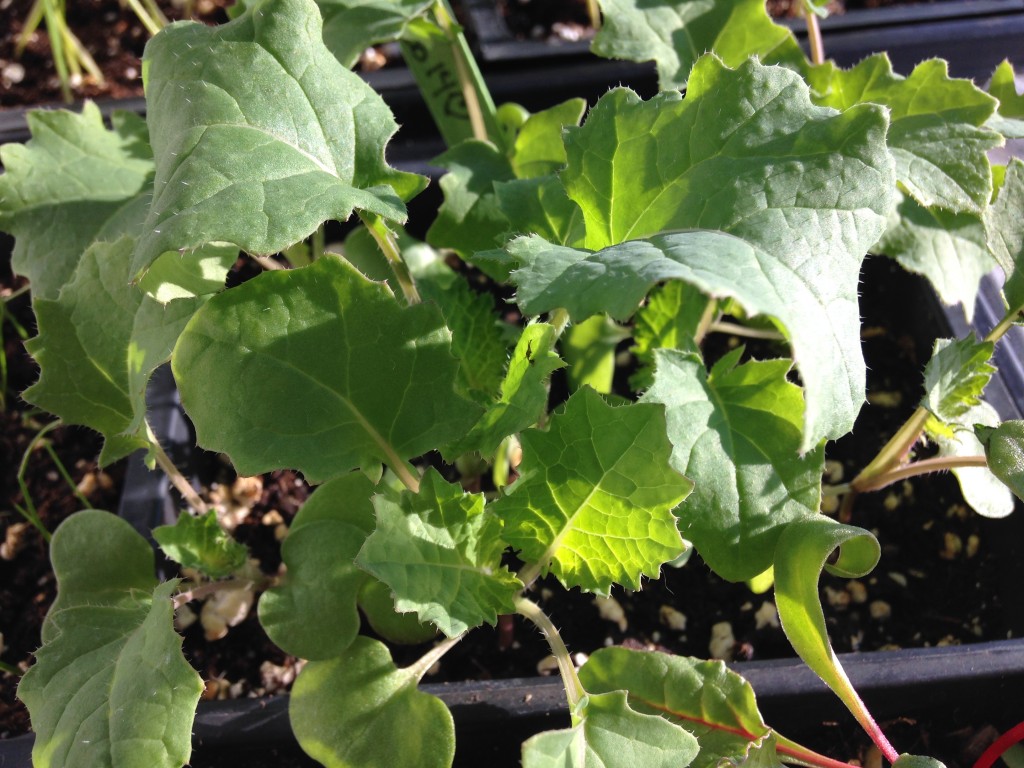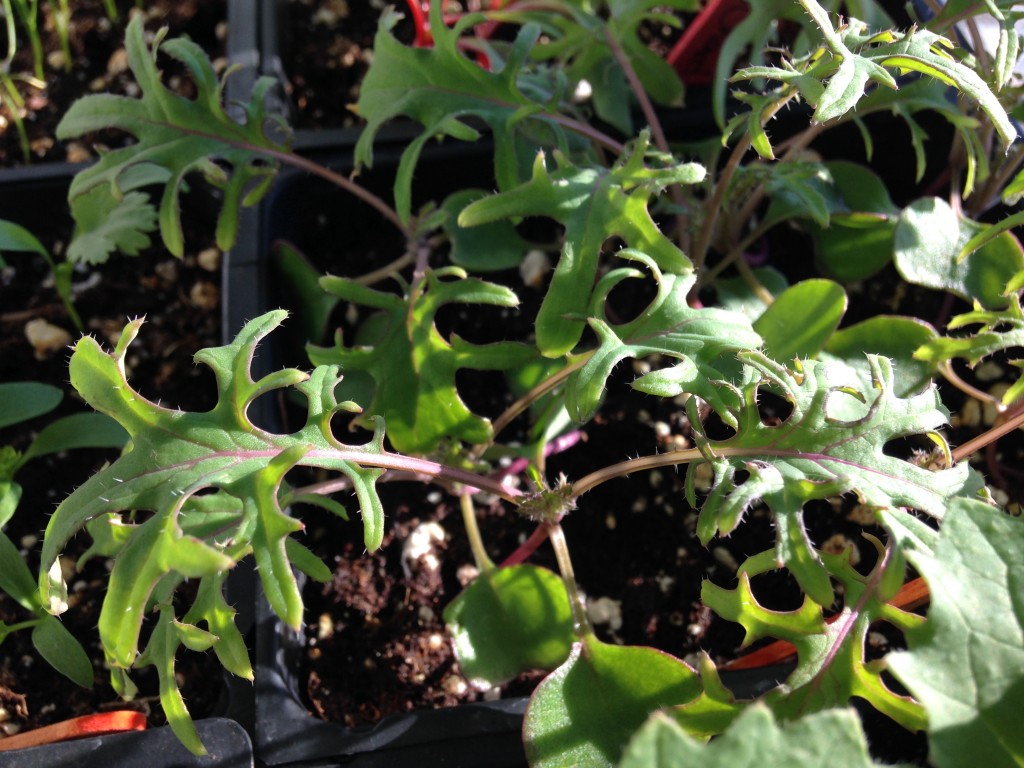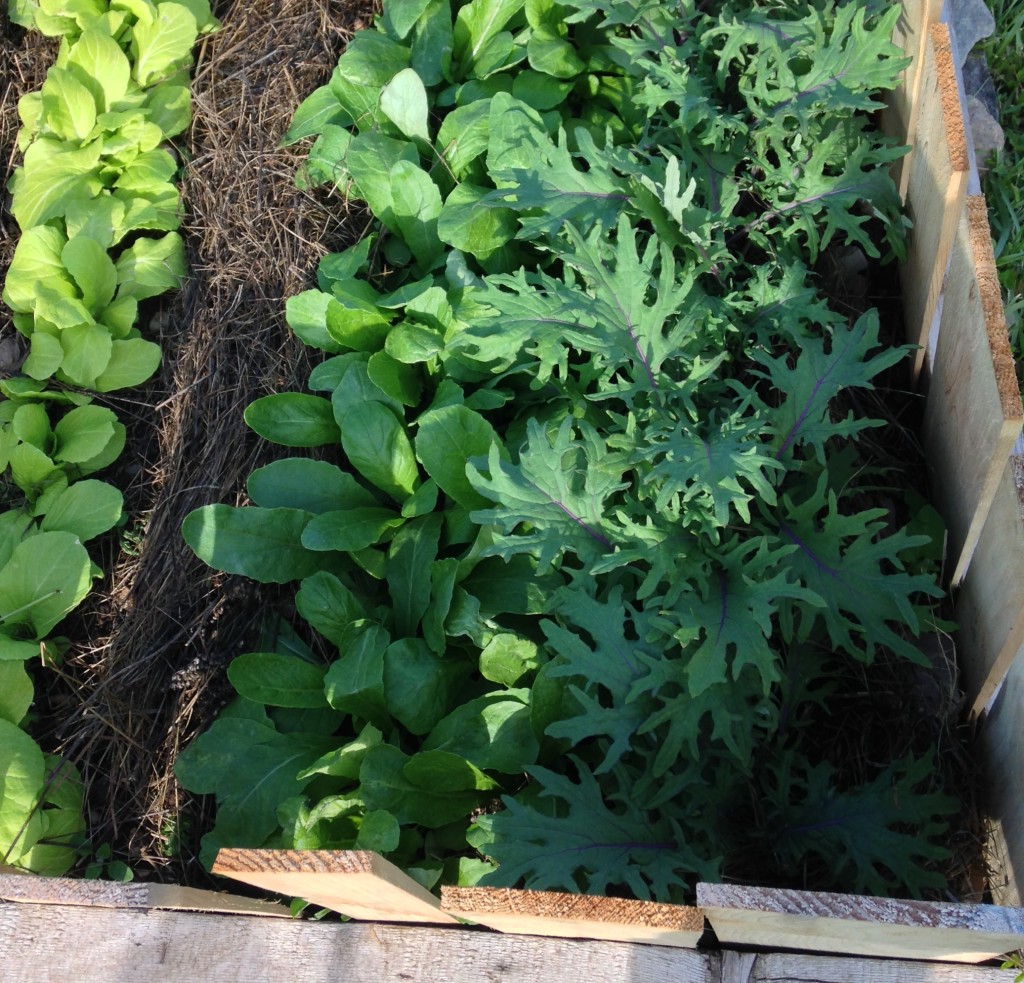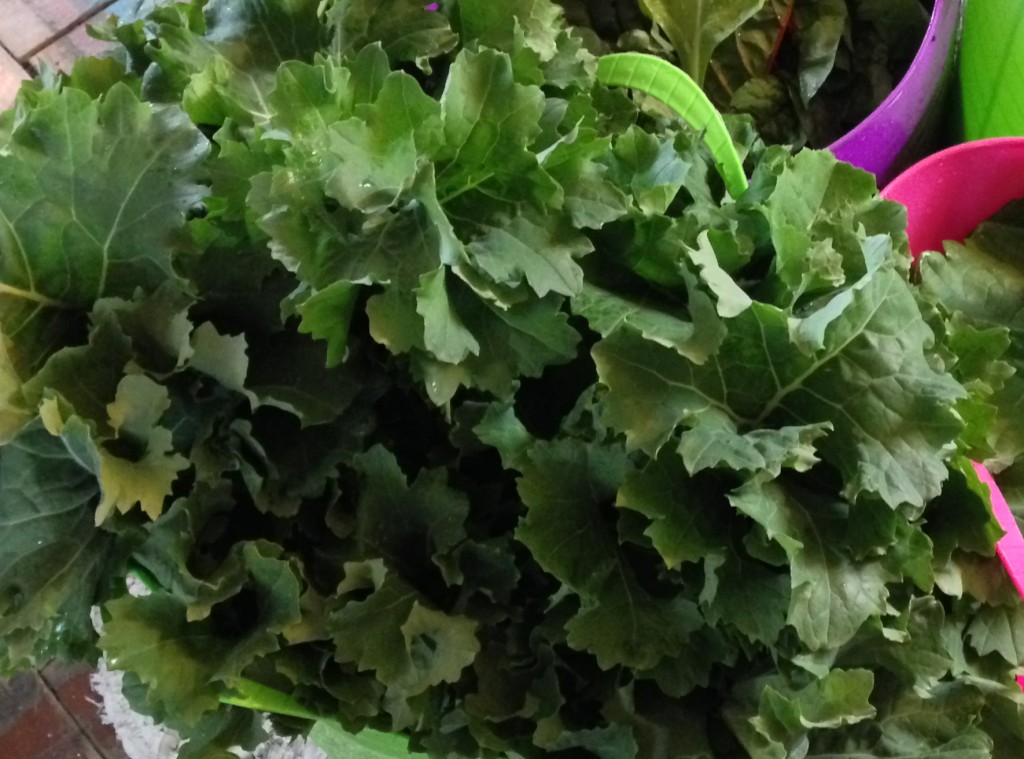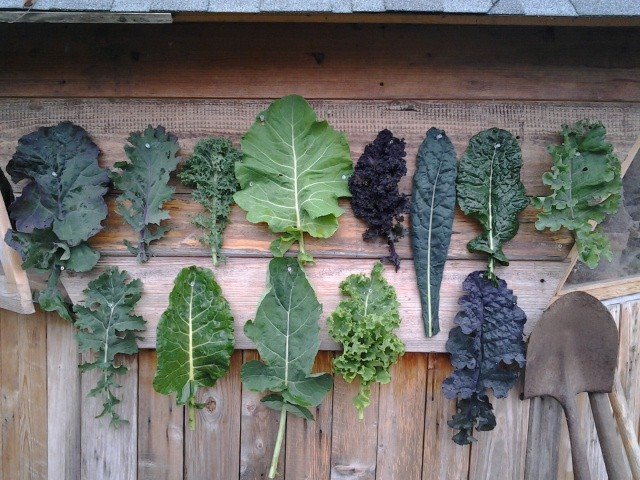 I am pretty sure that Kale does indeed make you nicer. Honest to goodness! We grow a lot of Kale in our market garden and it is really nice to see that people are growing ever more fond of this lovely and hard working fellow. At the Isle Madame Public Market our bundles of Kale always sell out fast and we hardly ever have any to truck back home (thankfully!).
I am pretty sure that Kale does indeed make you nicer. Honest to goodness! We grow a lot of Kale in our market garden and it is really nice to see that people are growing ever more fond of this lovely and hard working fellow. At the Isle Madame Public Market our bundles of Kale always sell out fast and we hardly ever have any to truck back home (thankfully!).
Kale and all the other members of the brassica family have always been my very favourite vegetables to grow (Broccoli, Cauliflower, Cabbage and the like). They are all so fabulously prehistoric looking and so sturdy. All of the cole crops are perfectly content to grow in cool wet conditions and that matches the weather that we have here in spades. Most varieties of Kale are especially cold hardy and will even survive through a pretty harsh winter with a little bit of protection. Lots to love for sure.
Kale is enjoying a well deserved fifteen minutes of fame as people rediscover the health benefits and the fabulous versatility of green leafy vegetables. One cup of Kale contains more vitamin C than a glass of orange juice, more calcium than a serving of milk, and more potassium than an entire banana. Wow is right! We like to use it in soups or stir-fries or as steam-wilted leaves minced into scrambled eggs. Fresh Kale makes a surprising salad when rubbed with olive oil and a little bit of sea salt. Of course, Kale is also a wildly popular addition to the uber-cool green smoothie. Good stuff.
There are many varieties of Kale but each of these falls into one of two sub-groups: the European Kales or the Siberian/Russian Kales. We find the latter group is generally sweeter and more cold hardy while the former group is the extra-ruffly Kale that most of us recognize as a plate garnish and that is also the Kale that cooks up into crispy Kale-chips.
I am a big fan of the Siberian/Russian varieties, they are less ruffly and so easier to clean (lazy cook here… yup) and I find them to be quite a bit more tender and succulent. The thick stems of Siberian Kale are very tasty and simply need to be tossed into the heat a few minutes before the leafy parts are added. Blanching and then freezing a few bundles of Kale is a great way to have lots of this lovely green all through the winter and is also a good trick to be able to have Kale during cabbage-white moth season.
Kale is very easy to grow and can be direct seeded as soon as the ground is ready to be worked. We like to sow it as transplants. This lets us keep an eye on the baby Kale plants and keeps them away from cutworms and slugs during the most vulnerable stage of growth. It also lets you get at least a couple of weeks ahead and this is helpful when your growing season is short.
Kale germinates almost as quickly as radishes (I think radishes do win the race for the speediest of all) and it then grows at a steady clip. When transplants are about six to ten inches tall they go out to the big kid garden. We give them a good drink of seaweed tea every couple of weeks and Ta-Dah! One day you look out in the garden and there is an army of Triffid-like Kale plants waiting to be harvested. There is no need to cut an entire plant, simply snap off the outer leaves and the Kale plants will regrow for continued harvests through the first frosts. If your plantings do eventually start to go to seed cut the unopened flower spears for super-cute tasty little broccoli.
So many pretty leaves!
10
